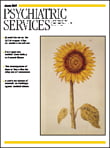Frontline Report
A Tobacco Treatment Model for Persons With Serious Mental Illness
Smokers with serious mental illness have less access to cessation services in the community, and integrated models for tobacco treatment within the mental health system may have advantages. Clubhouse programs, which combine rehabilitation with a social model for interaction, provide a unique opportunity for addressing tobacco dependence. We describe a model for addressing tobacco use in the Clubhouse of Suffolk, a not-for-profit agency in New York established in 1991 serving more than 800 members per year.
An important first step was to create and establish an atmosphere of trust within the clubhouse to foster staff and member "buy in." Any new programs had to be consistent with the clubhouse philosophy of recovery and empowerment. Clubhouse members were included in the planning process, which began in October 2003, and gave regular feedback on implementation. The greater awareness of the new services also engaged members in the processes of system change. Members were surprisingly supportive of all initiatives, and many wanted aggressive policy changes.
From the inception of the clubhouse, members were permitted to smoke outdoors. Initial plans for smoking cessation included assessing all members for tobacco use, developing strategies for working with smokers less motivated to quit, and providing action-oriented treatment for those ready to quit. We developed health fairs and educational events for clubhouse members.
An eight-session wellness curriculum was implemented that covered nutrition, exercise, and information about tobacco. The latter was critical because many members were misinformed about the dangers of tobacco use. This strategy increased the involvement of smokers less motivated to quit and also linked smoking cessation to other activities promoting healthy lifestyles. Many members graduated from the wellness curriculum into smoking cessation classes, creating a continuum of services. At wellness fairs, activities such as the "Carbon Monoxide (CO) Challenge" were successful in raising awareness and allowing members to see evidence of their own smoke exposure. This was also a powerful demonstration of the effects of environmental tobacco smoke; members were surprised to see elevated CO levels in nonsmokers who resided in community residences with smokers.
It was important to influence the social network of clubhouse members to decrease the acceptability of tobacco use. Members worked actively with program staff to replace smoking breaks with other health-oriented and social activities. A nonsmoking area was created on the grounds of Clubhouse of Suffolk to encourage alternative methods of socializing and fresh-air breaks. Recreational tobacco-free events held off-grounds were well attended, including overnight trips and sporting events.
Members were encouraged to advocate for other policy changes. In the summer of 2004, nine months after the program started, Clubhouse members (both smokers and nonsmokers) decided to restrict outdoor smoking to certain areas and to prohibit smoking near the entrances of the building. Two peer leaders who had been tobacco free for at least six months were hired to supplement program staff efforts. They provided additional support to members who had recently quit smoking through daily phone calls and support groups.
The program staff facilitated tobacco cessation groups that were held twice a week for eight-week cycles that repeated continuously for more than one year. Members did not need to be actively preparing to quit in order to join the group. Members benefited from education, ongoing support, and additional individual counseling sessions. Staff helped clubhouse members access tobacco treatment medications from off-site psychiatrists and primary care physicians. Clubhouse members who used pharmacotherapy were more successful in quitting. The program was fortunate to have a modest budget for purchasing nicotine replacement medications when they were not covered by Medicaid or other insurance providers.
The program also sought to reshape the culture of nearby mental health facilities by educating the providers and supporting a positive atmosphere toward smoking cessation. A tobacco advisory board with clubhouse administrative staff, key stakeholders, and local community providers was developed. The board was essential in helping to identify and resolve potential barriers to program implementation.
Clubhouse of Suffolk developed a tobacco treatment program for individuals with serious mental illness that was in keeping with the overall philosophy of member involvement and empowerment and that can serve as a model for other programs.



